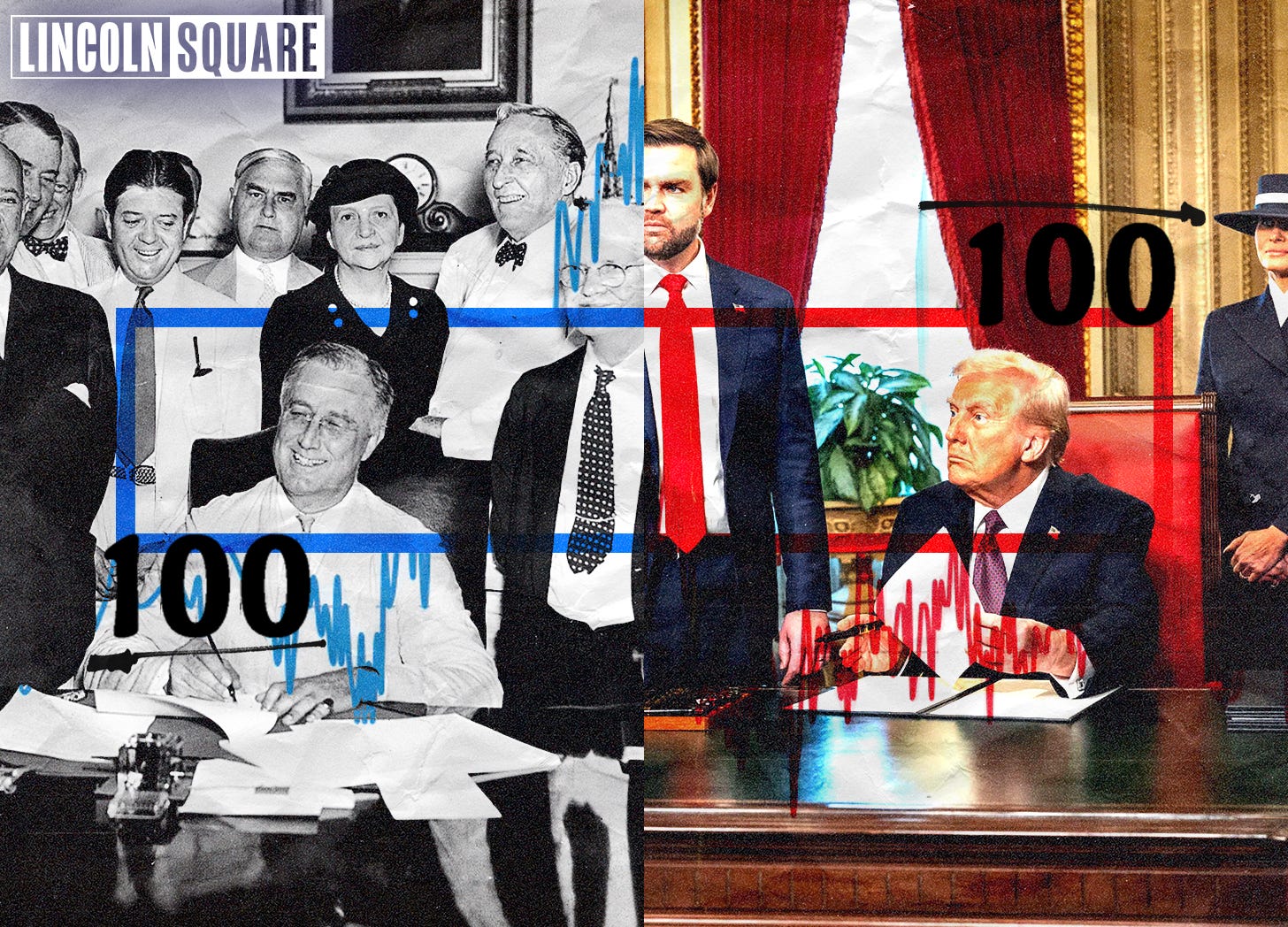100 Days of Construction vs. 100 Days of Destruction
A Promising New Deal and a Catastrophic Old Deal: 92 years after the first First Hundred Days, the latest First Hundred Days is its grotesque image in a distorting mirror.
When Franklin D. Roosevelt took office in 1933, the American and world economies were in total collapse. The banking system had crumpled. The unemployment rate was roughly 25 percent. Hope was all but dead. What his administration accomplished over its first hundred days in office set that as the standard length of time for an early judgment of how a pr…





